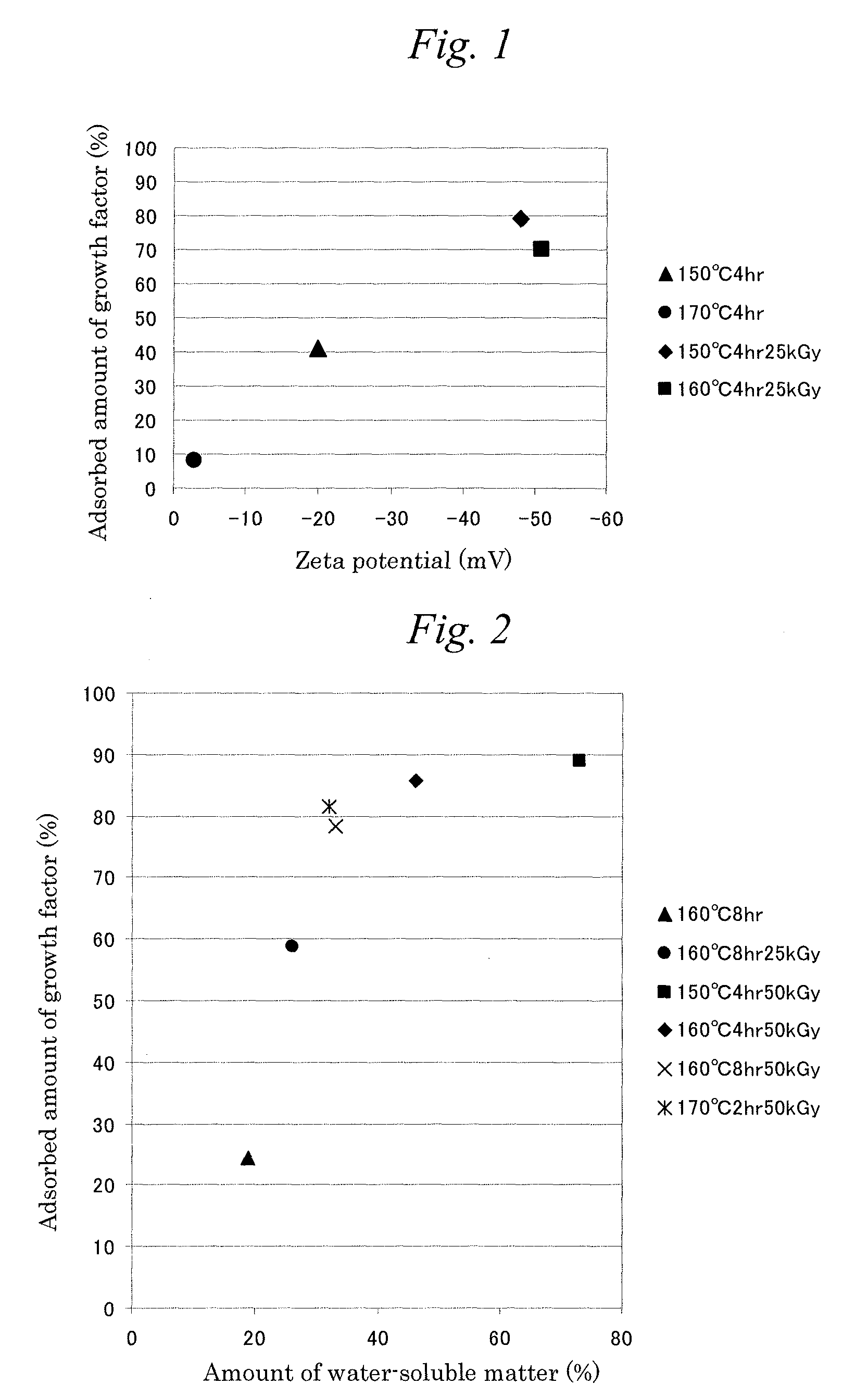Crosslinked gelatin support and support for controlled release of physiologically active substance using the same
a technology of crosslinked gelatin and support, which is applied in the direction of granular delivery, etc., can solve the problems that the effective therapeutic effect cannot be shown, and achieve the effects of increasing biodegradability, exceeding biodegradability, and decreasing biodegradability
- Summary
- Abstract
- Description
- Claims
- Application Information
AI Technical Summary
Benefits of technology
Problems solved by technology
Method used
Image
Examples
example 1
[0040]After 5 g of gelatin (derived from swine skin, jelly strength: 100 g (in accordance with JIS K6503)) was dissolved in 100 ml of water at 40° C., it was filled into a plastic vessel. The aqueous gelatin solution was allowed to stand under a temperature of 2 to 10° C. for 17 hours to achieve gelling and subsequently frozen at −80° C. Then, the frozen one is dried under a vacuum of 10 kPa or less in a freeze drier to obtain a sheet-shaped product. The product was crushed in a crushing mill and the particle diameter was adjusted using sieves of 25 μm, 63 μm, and 1,700 μm to obtain gelatin crushed particles having average particle diameters of 25 μm or less and 63 to 1,700 μm.
[0041]Next, each of the gelatin particles is subjected to a heating treatment at 150° C. (±5° C.) for 4 hours in a state of rotation at a rate of 18 times per minute under vacuum (5 kPa or less) in a small-size drum vacuum drier (manufactured by Aichi Electric Co., Ltd., trade name: BHR-0.5 type) to obtain a c...
example 2
[0042]A crosslinked gelatin support was obtained in the same manner as in Example 1 except that, in Example 2, the heating treatment was performed at 170° C. (±5° C.) for 4 hours.
example 3
[0043]After the crosslinked gelatin support obtained in Example 1 was placed in a plastic vessel under normal pressure in the air and was packaged with aluminum, it was irradiated with 25 kGy of γ-ray to obtain a crosslinked gelatin support subjected to the decomposition treatment.
PUM
| Property | Measurement | Unit |
|---|---|---|
| temperature | aaaaa | aaaaa |
| temperature | aaaaa | aaaaa |
| temperature | aaaaa | aaaaa |
Abstract
Description
Claims
Application Information
 Login to View More
Login to View More - R&D
- Intellectual Property
- Life Sciences
- Materials
- Tech Scout
- Unparalleled Data Quality
- Higher Quality Content
- 60% Fewer Hallucinations
Browse by: Latest US Patents, China's latest patents, Technical Efficacy Thesaurus, Application Domain, Technology Topic, Popular Technical Reports.
© 2025 PatSnap. All rights reserved.Legal|Privacy policy|Modern Slavery Act Transparency Statement|Sitemap|About US| Contact US: help@patsnap.com

